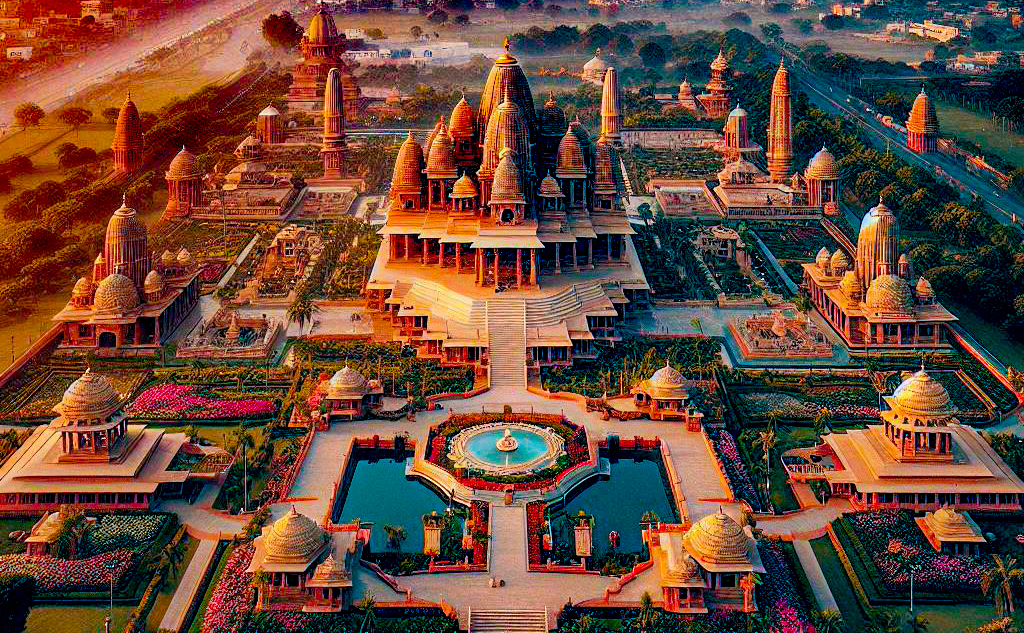

Ayodhya, the Uttar Pradesh town situated on the banks of Saryu, is set to witness the seven-day rituals of the ‘Pran Pratishtha’ or consecration ceremony of the Ram temple, that begins on Tuesday.
The rituals will culminate on January 22 with the grand ceremony that will be presided over by Prime Minister Narendra Modi and attended by thousands of VVIP guests.
The construction of the Ram temple began after the Supreme Court had settled the decades-long dispute on the site in November 2019, paving the way for its construction.
The construction of the Ram Mandir in Ayodhya has had a significant impact on the local economy, with implications for the broader Indian economy. Some of the key impacts include:
Boost to local businesses: The construction of the Ram Mandir has led to increased economic activity in Ayodhya, benefiting local businesses such as hotels, restaurants, and transportation services. This has created more jobs and generated higher income for the local population.
Infrastructure development: The construction of the temple has catalyzed infrastructure development in the region, leading to the improvement of roads and other essential facilities. This has not only enhanced the local infrastructure but also created employment opportunities.
Rise in property prices and construction boom: The anticipation of increased tourism and economic activity has led to a surge in property prices and a construction boom in Ayodhya and its surrounding areas. This has attracted investors, hoteliers, and business owners, leading to a real estate upswing.
A shift of religious economy from South India to North: The temple is set to draw an unprecedented number of tourists, underscoring the symbiotic relationship between religious tourism and economic prosperity. The construction of the Ayodhya temple is expected to enhance and sustain the upward trend of religious tourism in North India, which has been expanding beyond Southern India.
Increased tourism: The Ram Mandir is expected to attract millions of devotees from across India and the world, leading to a significant increase in tourism. This has the potential to provide a substantial boost to the local economy and create opportunities for the tourism industry. In the coming years, more than three lakh people are expected to visit Ayodhya daily.
India-Nepal ties: The construction of the Ram Mandir is expected to attract a large number of devotees from Nepal, as Janakpur (a city in Nepal), the birthplace of Sita, is believed to be the birthplace of Lord Ram's consort. This will lead to an increase in the number of tourists visiting both Ayodhya and Janakpur.
The increased tourism will also lead to the development of better road and rail connectivity between India and Nepal, as well as within Nepal. This will make it easier for tourists to travel between the two countries and within Nepal.
Long-term economic transformation: The construction of the Ram Mandir is expected to bring about a long-term economic transformation in Ayodhya, leading to sustained economic growth and prosperity for the region.
Influence on Forex: The construction of the Ram Mandir in Ayodhya is expected to have a positive impact on India's foreign exchange (forex) reserves as the temple is expected to attract a large number of devotees from countries like Malaysia, Indonesia, Thailand, Nepal, and the Philippines. The Ramayana, an epic poem that tells the story of Lord Ram, has been adapted and incorporated into the cultural traditions and religious idioms of Japan, Korea, and China.
Ramayana Circuit: The construction of the Ram Mandir in Ayodhya is expected to positively impact the Ramayana circuit, which is a tourism initiative that retraces the life of Lord Ram and includes major pilgrim sites related to the epic. The government is undertaking various development projects to improve tourism infrastructure, promote investments, and generate employment while focusing on theme-based, sustainable, and religious tourism.
Overall, the impact of the Ram Mandir on the Indian economy is expected to be positive, with the potential to drive economic growth, create employment opportunities, and boost local businesses and infrastructure development.
Comments
Write Comment